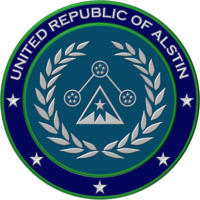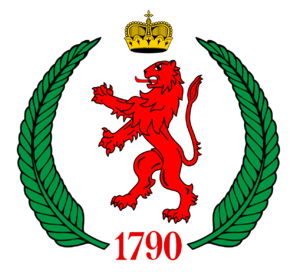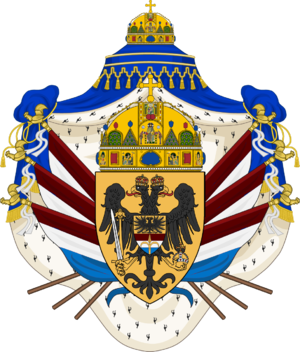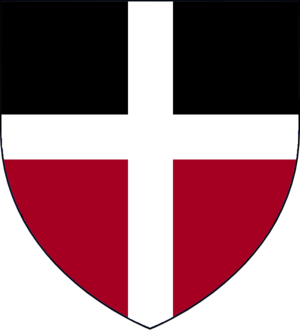Country Codes and Coats of Arms around the world: Difference between pages
mNo edit summary |
mNo edit summary |
||
| Line 1: | Line 1: | ||
''' | A '''national coat of arms''' is a symbol which denotes an independent state in the form of a heraldic achievement. While a national flag is usually used by the population at large and is flown outside and on ships, a national coat of arms is normally considered a symbol of the government or (especially in monarchies) the head of state personally and tends to be used in print, on armorial ware, and as a wall decoration in official buildings. The royal arms of a monarchy, which may be identical to the national arms, are sometimes described as arms of dominion or arms of sovereignty. | ||
{| class="wikitable | |||
An important use for national coats of arms is as the main symbol on the covers of passports, the document used internationally to prove the citizenship of a person. Another use for national coats of arms is as a symbol on coins of the associated state for general circulation. | |||
For a symbol to be called a "national coat of arms", it should follow the rules of heraldry. If it does not, then the symbol is not formally a coat of arms but rather a national emblem. However, many unheraldic national emblems are colloquially called national coats of arms anyway, because they are used for the same purposes as national coats of arms. National emblems are commonly found in countries without a heraldic tradition but can be considered equivalent and are therefore included below, however national seals are considered to be beyond the scope of this article. | |||
{| class="wikitable" | |||
!Country | !Country | ||
! | !Image | ||
! | !Type | ||
! | !Notes | ||
|- | |- | ||
|{{flag|Alstin}} | |{{flag|Alstin}} | ||
|[[File:Alstin Seal.png|300x300px]] | |||
|Coat of Arms | |||
| | | | ||
|- | |- | ||
|{{flag|Arcerion}} | |{{flag|Arcerion}} | ||
| | |[[File:Arco Coat of Arms Type 2.png|300x300px]] | ||
| | |Coat of arms | ||
| | |||
| | | | ||
|- | |- | ||
|{{flag|Cartadania}} | |{{flag|Cartadania}} | ||
| | |[[File:Coat of Arms of Cartadania.svg|331x331px]] | ||
|Coat of arms | |||
| | |||
| | |||
|- | |- | ||
|{{flag|Caphiria}} | |{{flag|Caphiria}} | ||
| | |[[File:Caphiria COA.svg|336x336px]] | ||
| | |Coat of arms | ||
| | | | ||
|- | |- | ||
|{{flag| | |{{flag|Metzetta}} | ||
| | | | ||
| | |Emblem | ||
| | | | ||
|- | |- | ||
|{{flag|Pelaxia}} | |{{flag|Pelaxia}} | ||
| | |[[File:Pelaxia Coat of Arms.svg|359x359px]] | ||
| | |Coat of arms | ||
| | |||
| | | | ||
|- | |- | ||
|{{flag|Urcea}} | |{{flag|Urcea}} | ||
|[[File:Kingdom Arms.png|352x352px]] | |||
|Coat of arms | |||
| | | | ||
|- | |- | ||
|{{flag|Varshan}} | |{{flag|Varshan}} | ||
| | |[[File:Mayahuel.svg|330x330px]] | ||
| | |Emblem | ||
| | | | ||
|- | |- | ||
|{{flag|Yonderre}} | |{{flag|Yonderre}} | ||
|[[File:Shield of Joanus.png|330x330px]] | |||
|Coat of arms | |||
| | | | ||
|} | |} | ||
{{B.I.S NavBox}} | {{B.I.S NavBox}} | ||
[[Category:Bureau of International Statistics]] | [[Category:Bureau of International Statistics]] | ||
Revision as of 18:36, 13 April 2022
A national coat of arms is a symbol which denotes an independent state in the form of a heraldic achievement. While a national flag is usually used by the population at large and is flown outside and on ships, a national coat of arms is normally considered a symbol of the government or (especially in monarchies) the head of state personally and tends to be used in print, on armorial ware, and as a wall decoration in official buildings. The royal arms of a monarchy, which may be identical to the national arms, are sometimes described as arms of dominion or arms of sovereignty.
An important use for national coats of arms is as the main symbol on the covers of passports, the document used internationally to prove the citizenship of a person. Another use for national coats of arms is as a symbol on coins of the associated state for general circulation.
For a symbol to be called a "national coat of arms", it should follow the rules of heraldry. If it does not, then the symbol is not formally a coat of arms but rather a national emblem. However, many unheraldic national emblems are colloquially called national coats of arms anyway, because they are used for the same purposes as national coats of arms. National emblems are commonly found in countries without a heraldic tradition but can be considered equivalent and are therefore included below, however national seals are considered to be beyond the scope of this article.
| Country | Image | Type | Notes |
|---|---|---|---|

|
Coat of Arms | ||

|
Coat of arms | ||

|
Coat of arms | ||

|
Coat of arms | ||
| Emblem | |||

|
Coat of arms | ||

|
Coat of arms | ||
| Emblem | |||

|
Coat of arms |